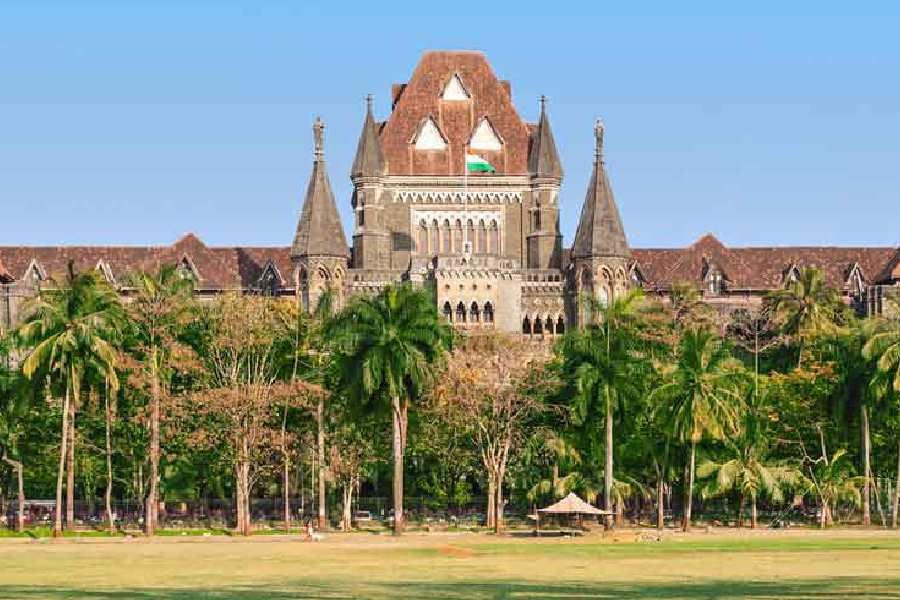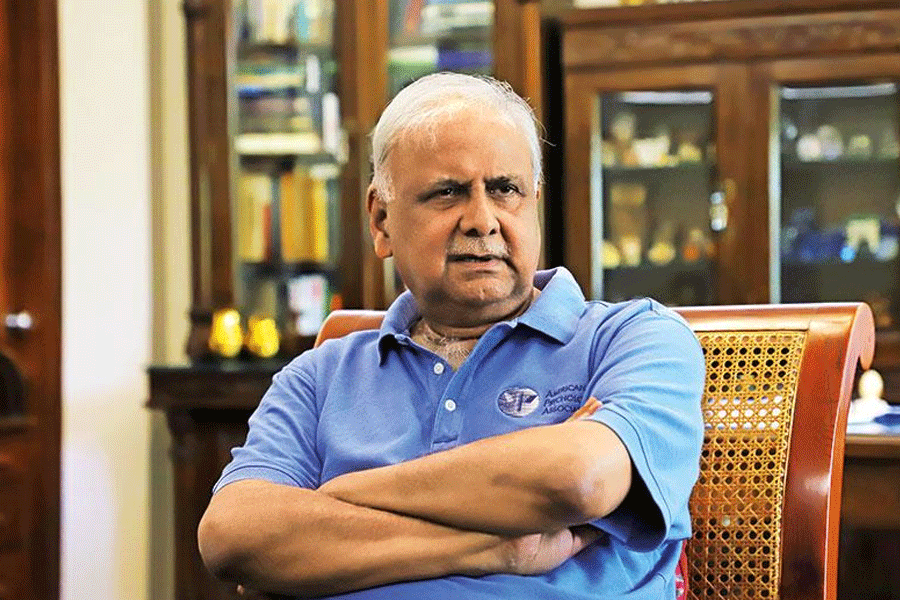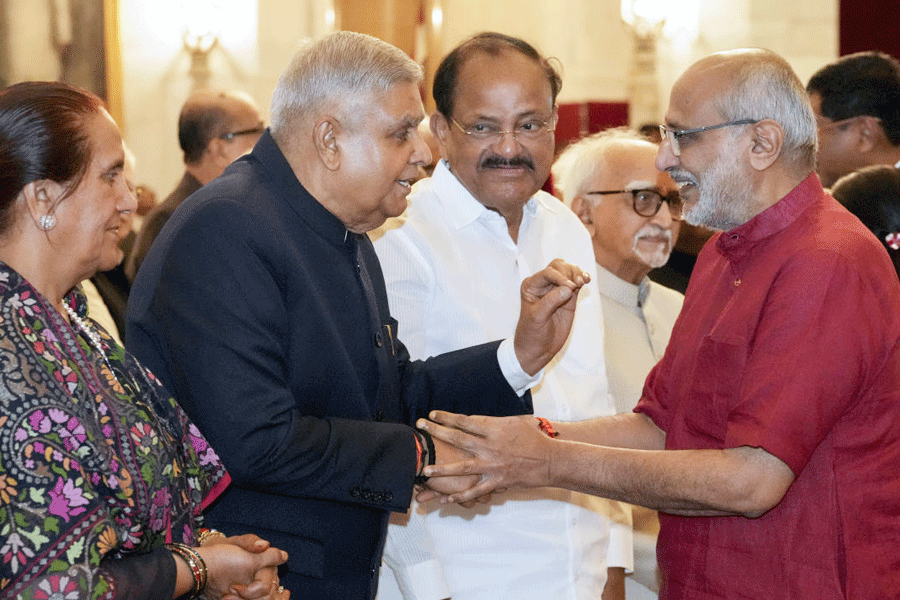 |
Ashis Bhattacharjee gave a distinguished solo performance of Tagore songs at Rabindra Sadan on December 17. He began the evening, organised by Dakshin Kalikata Nandaniki, with Jagate tumi raja and Jage nath jochhonaraate, following up with a cluster of Puja songs. A minimal accompaniment of esraj, mandira and the tabla, the conspicuous absence of excess — of both feeling and form — and the artist’s unfailing adherence to traditional notation made the listening experience both intellectually engaging and poignant. He excelled particularly in Daake baro baro, Tumi chherechhile bhulechhile bole and Ashim dhan to achhe tomar. The first half ended with a powerful rendition of E moho abaran without the percussion.
The second half started with Bhattacharjee struggling against a slightly incapacitated voice that affected his rendition of Dekhate parine keno pran. However, Bhattacharjee succeeded in riveting the audience with Bina shaaje shaji, amar dhyaneri dhan and Andhare ekela ghare. The last, rendered faithful to the notation, sounded distinctive in its difference from its more popular version. Bhattacharjee’s register was intellectually rigorous, even self-consciously aware of the difference from the better known version, canonised by Suchitra Mitra, Rajeshwari Dutta and Kanika Banerjee. Yet he was never too far from the core of feeling which informs the song.











